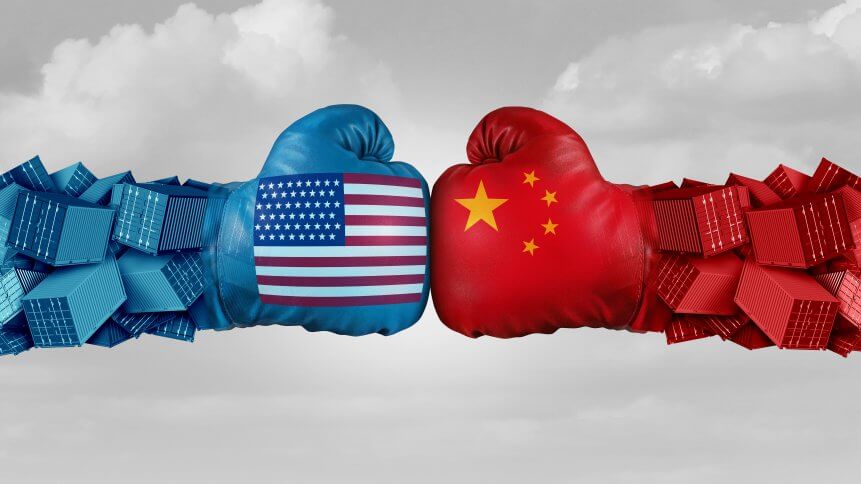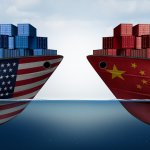How can US rise to the top in its trade war with China?

China overtook the US as the world’s top manufacturing superpower in 2010, years before former US President Donald Trump worsened the ongoing China-US trade war in 2018.
By 2019, China made up 28.7% of global manufacturing output while the US came second at 16.8% and Japan in third with a 7.5% share of the pie. The trade war escalated when the Trump administration started increasing tariffs on imports from China which snowballed into a series of tit-for-tat retaliation.
US tariffs on Chinese imports are sky high
By January 2021, the average US tariffs on Chinese imports were more than six times higher than before 2018 at 19.3%, with 66.4% of Chinese exports subject to US tariffs.
Meanwhile, according to the Peterson Institute for International Economics think tank, the average Chinese tariffs on imports from the US was 20.7%, and China subjected 58.3% of US exports to its tariffs.
US-China trade war hurt consumers and small businesses
The trade war hurt consumers the most as businesses passed on the costs rather than absorbing the hikes. Small businesses also suffered as they neither have as much leverage as big corporations to weather the increasing import prices, nor the ability to pass on the cost to the consumers.
Moreover, its initial goal to bring more manufacturing jobs back to the US and incentivize China to uphold its promises to provide more access to its market made to enter the World Trade Organization in 2001 came to moot. In fact, US imports from China continue to rise despite the increased tariffs, and at its peak cost around 245,000 US jobs.
A study found most multinational companies chose to stay put as well and noted that foreign investments into China hit a record $144.37 billion in 2020, a 4.5% growth from 2019.
Human rights violations not a deterrent to businesses
Even China’s reported human rights violations, which figured into the US imposing sanctions on the world’s largest country, are not a deterrent to some businesses. Tesla, for example, recently opened a showroom in Xinjiang where the Chinese government is allegedly perpetrating the genocide of ethnic Uyghurs and other Muslims.
China rejected the genocide labeling, framed it as vocational training camps, and went on its usual gaslighting narrative with authoritarian strongarming when faced with businesses responding to its human rights abuses allegations in ways that it didn’t like.
China’s ascend to be the number one in manufacturing is rooted in it taking over what America didn’t want to produce, such as low-tech and cheap consumer goods, supported by its massive cheap labor pool and organized and concentrated supply chain leading to high efficiency. Plus, the government’s protectionist stance, of course.
US businesses remaining competitive
US businesses can remain competitive by focusing on high-end manufacturing and advancing their high-tech industries. The Trump trade war did what the Chinese government initially couldn’t – fueling the pace of building up China’s self-reliant supply chains through Xin Chuang or the Information Technology Application Innovation Industry.
The term Xin Chuang first appeared in March 2016 with the Xin Chuang Working Committee’s establishment, which comprised dozens of leading Chinese IT companies, universities, and research centers in Beijing, according to a FutureLogic report analyzing China’s domestic IT infrastructure ecosystem.
China’s tech ecosystem and huge technological gaps
“The objective of Xin Chuang is a Chinese tech sector without Intel, Qualcomm, or Microsoft, or a tech ecosystem that is completely free from the threat of US sanctions,” the media, intelligence and data conglomerate said in a statement announcing the release of its ‘China Tech Decoupled’ report last November.
The report identified its immature tech ecosystem and huge technological gaps as some of China’s challenges on its road to providing domestic replacement options. “In areas like chip IP (intellectual property), EDA (electronic design automation) software, chip manufacturing, operating systems, and application software, the technological gap between China and the global leaders remains vast,” the report said.
“Such massive gaps will take decades to close, as China’s EDA industry needs to consolidate, cultivate a client base, increase research and development spending, educate and train talent, scale-up, as well as improve their technology,” it explained. “Similarly, Chinese companies lag global market leaders by two generations or more in manufacturing nodes in semiconductor manufacturing.”
Made-in-America executive order
Therein lies the opportunity for the US to maintain its competitive edge. The US is already pivoting its taxpayer dollars towards investment in its domestic businesses when President Joe Biden signed the Made-in-America executive order last year.
‘This order is deeply intertwined with the President’s commitment to invest in American manufacturing, including clean energy and critical supply chains, grow good-paying, union jobs, and advance racial equity.
The federal government should buy from suppliers that are growing the sectors of the future and treating their workers with dignity and respect,” the White House said in a statement last January. By supporting developments in technology and better conditions for its workers and consumers, the US is on the right track to nurture a resilient foundation for today and the future.
This isn’t the time to reminisce for days long gone, and it is time to move forward, especially when the battlefield is transitioning faster and deeper into the digital world.









